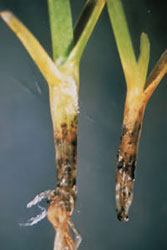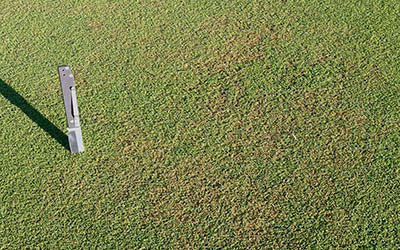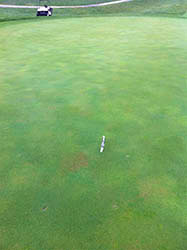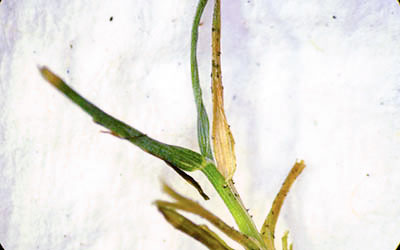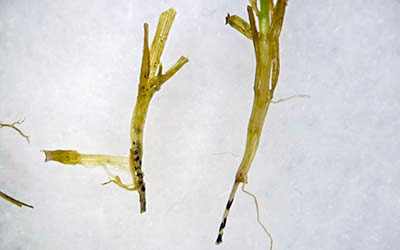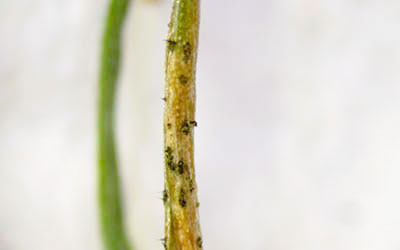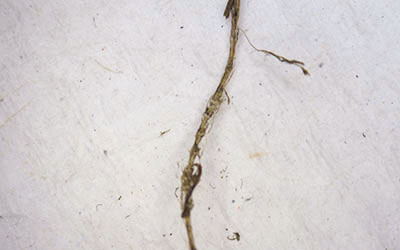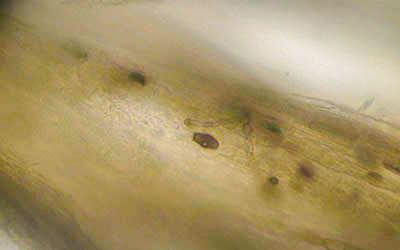Colletotrichum cereale
![]()
![]()
![]()
![]()
![]()
Hosts
Annual bluegrass (Poa annua)
Creeping bentgrass
(certain cultivars such as 'Penncross,' 'Pennlinks' & 'SR1020')
Disease description:
Anthracnose can occur on golf putting greens as either a foliar blight or a more damaging basal crown rot. The disease is much more destructive and frequently observed on Poa annua than creeping bentgrass. Although the disease can occur in milder temperatures, symptoms are most commonly seen during hot, humid weather in early or late summer in Missouri. From a distance, symptoms can be highly variable but most often appear as small yellow, orange or reddish brown freckle-like spots (less than 2 inches in diameter) that if left untreated may merge to form larger patches. On individual plants affected with foliar blight, characteristic hairlike projections called setae can be observed on leaf tissue with a small microscope or hand lens. Leaf sheaths, crowns and stolons will be dark black and rotted on plants affected with anthracnose basal rot symptoms.
Control
Anthracnose symptoms are most severe in areas that are stressed by low mowing, excessive traffic, low fertilization or irrigation. A frequent low-nitrogen rate fertility program through the late spring and summer and raising cutting heights can result in marked decreases in anthracnose severity. Fungicide use may be warranted on greens that routinely get this disease.
Images
